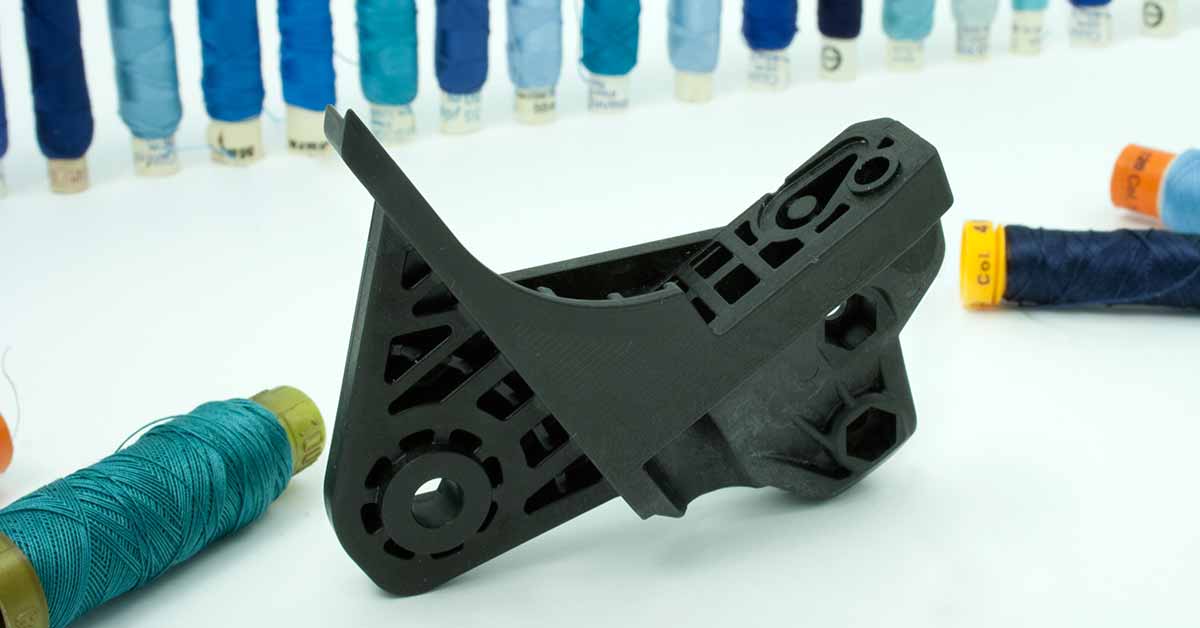
Light weight, strength and rigidity are essential features in any kinematic mechanism, especially if it is part of a device operating at particularly high speeds and required to perform with great precision.
If the mechanism is subjected to cyclical operation, resistance to fatigue is also essential, as it is the primary cause of failure due to repeated stress.
Industry today includes numerous applications with these requirements, such as machinery and robots for industrial automation or looms for producing textiles.
The structural elements operating in these apparatuses are normally made of metals such as steel or aluminium or magnesium alloys, or out of composite materials with a thermosetting matrix reinforced with fibreglass or carbon fibre.
But these conventional solutions have the disadvantage of making it impossible to create complex geometric shapes with simple, rapid, cost-competitive production cycles.
The processes of working on solids and casting typical of metalwork, as well as sintering and other powder technologies, require much slower, more expensive processes.
The difficulties inherent in the process of working with composite materials are further complicated by the impossibility of creating articles of complex form combining multiple functions.
Quickly and cheaply moulding an article with all the rigidity of metal is the challenge LATI has accepted, offering the market a family of thermoplastic compounds made with up to 45% high modulus carbon fibres.
First offered in 2007, LATI’s HM compounds were readily accepted on the market thanks to their high modulus of elasticity, in excess of 40 GPa and therefore much higher than any other degree of injection moulding reinforced with fibreglass or high resistance carbon available on the market.
The possibility of injection moulding such a rigid article has opened up a whole new range of possibilities in industry, such as in textiles machinery and automation.
HM compounds permit use of plastic elements with very limited deformation under loads, comparable to that of metals, through the Young modulus, which is more than double that of similar conventionally reinforced materials.
With negligible play and flexing, lever controls and kinematic elements gain precision in operation, allowing the machines in which they are incorporated to make a major leap forward in performance.
The limited weight of the polymer element also reduces inertia in motion, a factor that not only permits adoption of higher operating frequencies, but also reduces the absorption of power required to activate the mechanism.
Friction and wear are also limited, reducing the need for external lubrication, which always creates problems, and for harder wear-proof bushings.
Reduced weight and inertia decrease the constraining reactions and internal actions that cause the formation and propagation of cracking and lead to failure due to fatigue.
HM compounds are made from thermoplastic resins offering high chemical and thermal performance, such as PPA, PPS and PEEK.
This allows LATI to offer materials capable of resisting the loads imposed in even the most difficult environments due to continuous operating temperatures and aggressive factors, such as robots operating in painting plants and furnaces or looms and other textiles machinery operating in contact with materials such as sizing oils.
Moreover, the presence of a large quantity of carbon fibres acts as an excellent anti-static, preventing accumulation of dust, particulate and dirt of all kinds.